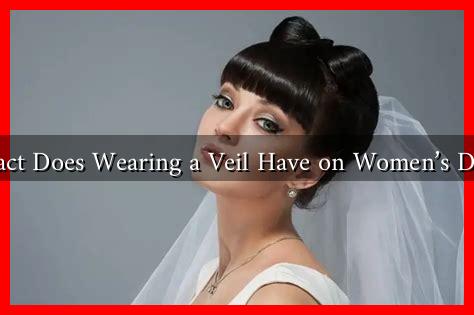-
Table of Contents
What Impact Does Wearing a Veil Have on Women’s Daily Lives?
The practice of wearing a veil, whether for religious, cultural, or personal reasons, has profound implications on women’s daily lives. This article explores the multifaceted impact of veiling, examining its effects on social interactions, personal identity, and even economic opportunities. By delving into various perspectives and experiences, we aim to provide a comprehensive understanding of this complex issue.
The Cultural and Religious Significance of Veiling
For many women, wearing a veil is deeply rooted in cultural and religious traditions. In Islam, for instance, the hijab is often seen as a symbol of modesty and piety. According to a study by the Pew Research Center, approximately 62% of Muslim women worldwide choose to wear the hijab, reflecting their commitment to their faith.
- Religious Identity: For many, the veil serves as a visible marker of their religious identity, fostering a sense of belonging within their community.
- Cultural Heritage: In various cultures, veiling practices are tied to historical customs, reinforcing cultural identity and continuity.
Social Interactions and Perceptions
The way women are perceived in society can be significantly influenced by their choice to wear a veil. This can lead to both positive and negative social interactions.
- Positive Interactions: In some communities, wearing a veil can enhance social bonds among women who share similar beliefs and practices.
- Negative Stereotypes: Conversely, women who wear a veil may face discrimination or prejudice, particularly in Western societies where veiling is less common. A report by the European Network Against Racism found that Muslim women are often targets of Islamophobia, which can affect their mental health and social well-being.
Impact on Personal Identity
The decision to wear a veil can also shape a woman’s personal identity. For some, it is an empowering choice that allows them to express their beliefs and values. For others, it may feel like a constraint imposed by societal or familial expectations.
- Empowerment: Many women report feeling empowered by their choice to wear a veil, viewing it as a form of self-expression and autonomy.
- Pressure and Expectations: On the other hand, some women may feel pressured to conform to veiling practices, leading to internal conflict regarding their identity.
Economic Opportunities and Challenges
The impact of wearing a veil extends into the economic realm as well. Women who choose to wear a veil may encounter both opportunities and challenges in the workplace.
- Employment Opportunities: In some regions, wearing a veil can limit job opportunities, particularly in sectors where a professional appearance is emphasized. A study by the Institute for Social Policy and Understanding found that Muslim women who wear hijabs are often perceived as less competent by employers.
- Entrepreneurship: Conversely, some women leverage their veiling as a unique aspect of their identity to create niche businesses, such as modest fashion lines or beauty products tailored for veiled women.
Case Studies and Real-Life Experiences
Real-life experiences provide valuable insights into the impact of veiling on women’s lives. For instance, a study conducted in France revealed that Muslim women who wear the hijab often face challenges in public spaces, including harassment and exclusion from social activities. In contrast, a survey in Indonesia showed that women who wear the hijab feel a strong sense of community and support among fellow veiled women.
Conclusion
The impact of wearing a veil on women’s daily lives is complex and multifaceted. While it can serve as a source of empowerment and cultural identity, it can also lead to discrimination and economic challenges. Understanding these dynamics is crucial for fostering a more inclusive society that respects individual choices and promotes equality. As we navigate discussions around veiling, it is essential to consider the diverse experiences of women and recognize that their choices are often deeply personal and influenced by a myriad of factors.
For further reading on the subject, you can explore resources from the Pew Research Center and the European Network Against Racism.

